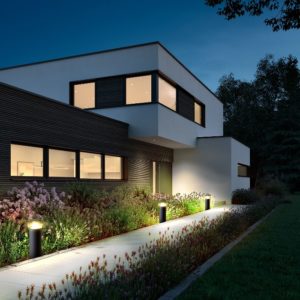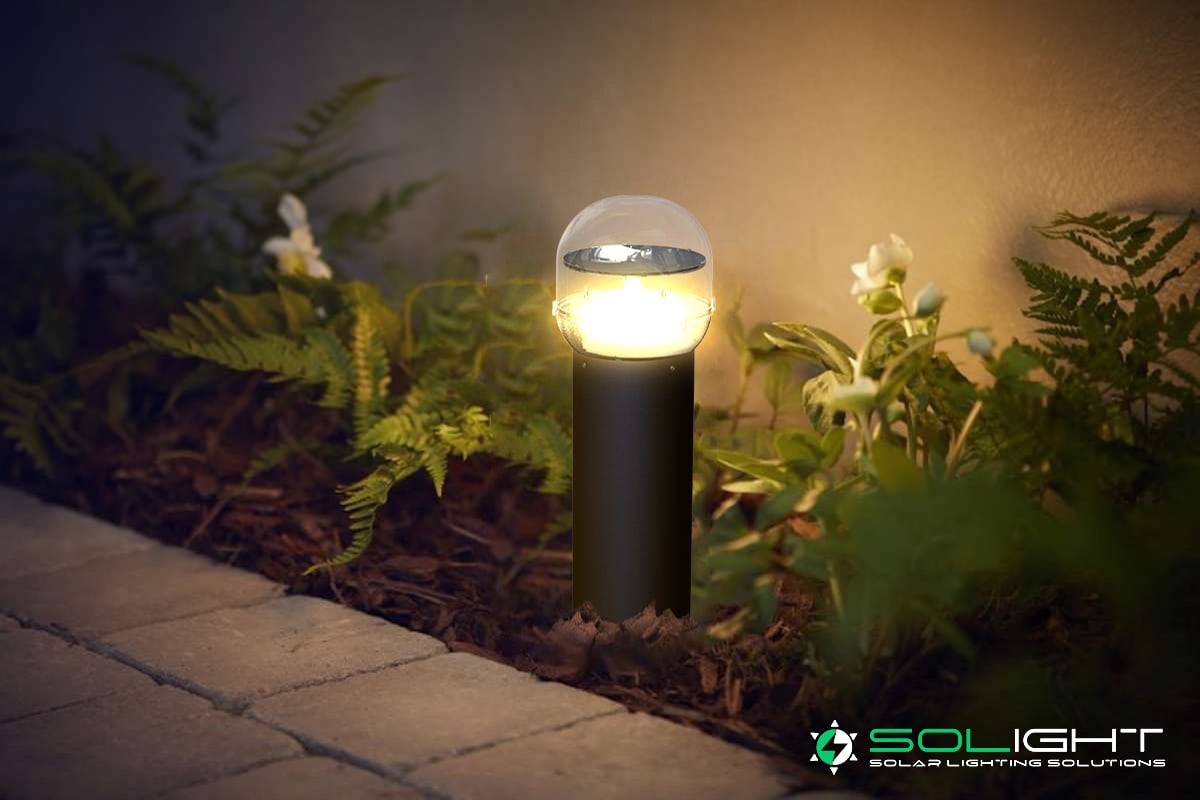Solar garden lights perform best when they receive maximum exposure to the sunlight – but what should you do if you’d like to install a solar security light or decorative garden lights in a shady space?
To advise you on the ideal positioning for outdoor solar lights, we have put together this guide to help you decide the right placement, angle, and use for your outdoor solar powered lights.
Choosing the Right Solar Garden Lights for Your Home
One of the first considerations is the type of outdoor solar lights you require. That might be a set of higher-powered landscape lights, wall-mounted solar lights to illuminate pathways and water features, or elegant garden lights for aesthetic dining areas.
Your choice of solar light is a factor because the position of the solar panel will affect performance. A wall-mounted light placed higher up will normally receive greater sunlight than a small light set in a shady space at ground level.
Each product within our garden lighting catalogue includes full specifications to ensure you make an informed decision, with details of:
- The number of hours of lighting time in overcast weather.
- Automatic on and off sensors or automated charging.
- Warranty periods.
- Step-down lighting options to conserve performance.
For example, the Solar Billboard Light functions for ten days even when the weather is cloudy, with variable lumens providing continuous lighting between charges. This model requires seven hours to reach a full charge, so one brighter day every week or two is sufficient.
Do Solar Garden Lights Work in the Shade?
While solar panels operate optimally with plenty of sunlight, they can work in partial shade and are a cost-effective way to install year-round lighting with advanced technology, as we’ve mentioned above.
Most gardens have certain times of day when trees, fencing, walls, or the building itself blocks the sunlight, but that does not mean you can’t fit an attractive set of solar powered lights! You can also do several things to optimise solar charging if your lights only receive partial charges each day or during the winter when the cloud cover extends charging times.
Wiping your solar panels now and then to remove dust and debris will avoid any blockages that mitigate the charging effectiveness. Removing vegetation or leaves that grow to overhang the solar panel is useful. It is also wise to place your solar garden lights away from artificial light sources, where indoor lighting from windows can confuse automatic charging switches or create excess light that the solar panel mistakes for actual daylight.
However, our huge range of exceptional quality solar lights are designed for everyday use, work in a diverse range of environments, and can operate perfectly with partial shade, provided there is enough sunlight exposure for the solar cells to recharge periodically.

Where to Install Solar-Powered Garden Lights
Most solar lights will produce a slightly dimmer lighting level in low-light conditions or where the solar battery hasn’t reached a full charge. Therefore, security lights or garden lighting used as a safeguard around outdoor space should be positioned higher up to improve access to sunlight.
Staked solar garden lights that run along a pathway look good spaced evenly rather than grouped together, so you should charge your lights and then test how they look and function in your desired placements. The advantage of wireless solar lights is that you can move them, reposition them at different times of the year, or change the location of your lights if you find that one spot is too shady to provide a sufficient charge.
Solar garden lights at ground level work particularly well along steps and prevent a trip hazard while providing a modern, balanced lighting system.
You can also keep an eye on your garden throughout the day to determine when and how long each space has direct sunlight. Solar lights placed in discrete areas, such as dotted through flowerbeds, look atmospheric and can provide enough illumination to reduce the need for additional lighting in shadier spots.
Fitting Solar Garden Wall Lights
Wall lights tend to be positioned higher on a fence or wall, so they are less likely to be obstructed by trees or plants, but it’s also worth checking the position and angle of the lights before you fix the unit.
Solar garden lights are less aggressive than security floodlights. However, they can still be surprisingly bright, so if you are looking for ambience and a gentle glow, we’d suggest placing the light opposite the area you’d like lit up at night rather than directly overhead.
One option is to go for twin wall lights if you have a larger space, such as a deck, patio or dining area, and are concerned that one solar garden light isn’t enough. Twin lights placed evenly along a fence or in opposite corners look neat and tidy and double up on the light provided, resolving any lower light levels due to partial charging.
Tips for Picking the Correct Solar Light Placement
We often forget that the sunlight flowing into our gardens changes with the seasons, so if you haven’t lived in your property long, it can be great to ask neighbours or think about how the shade will change over the months.
Although one spot might be gloriously bright in the summer, it may become shaded in the winter, making it harder for a solar battery to recharge in cloudy weather. Solar batteries work best when they are initially charged to 100% before the first use, so you can leave your lights outside somewhere bright and sunny for a full day and then experiment with placements and positions.
Because there are no cables or wires to worry about, you can also move your solar lights as often as you wish. One option for a very shady garden might be to choose staked ground lights and charge them once a week on a different part of your property – although this is rarely necessary!
We hope this guide gives you plenty of advice about selecting the right spot for your solar garden lights. If you have any further questions or need recommendations about suitable solar lighting for your home, please get in touch with the SoLight team at your convenience.





